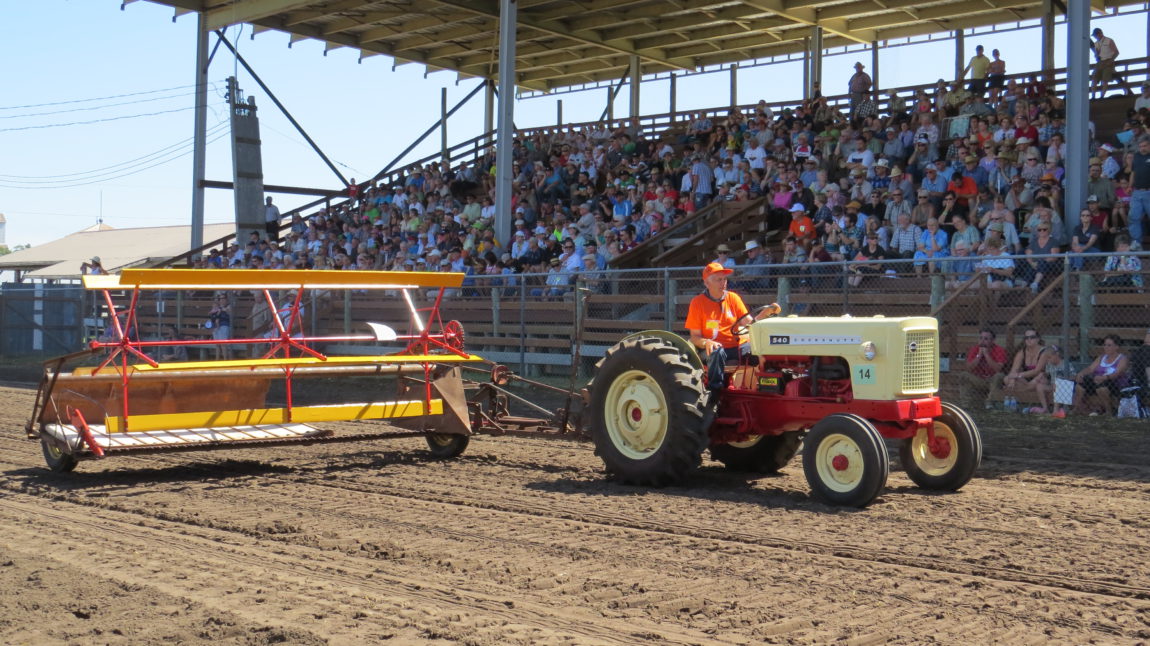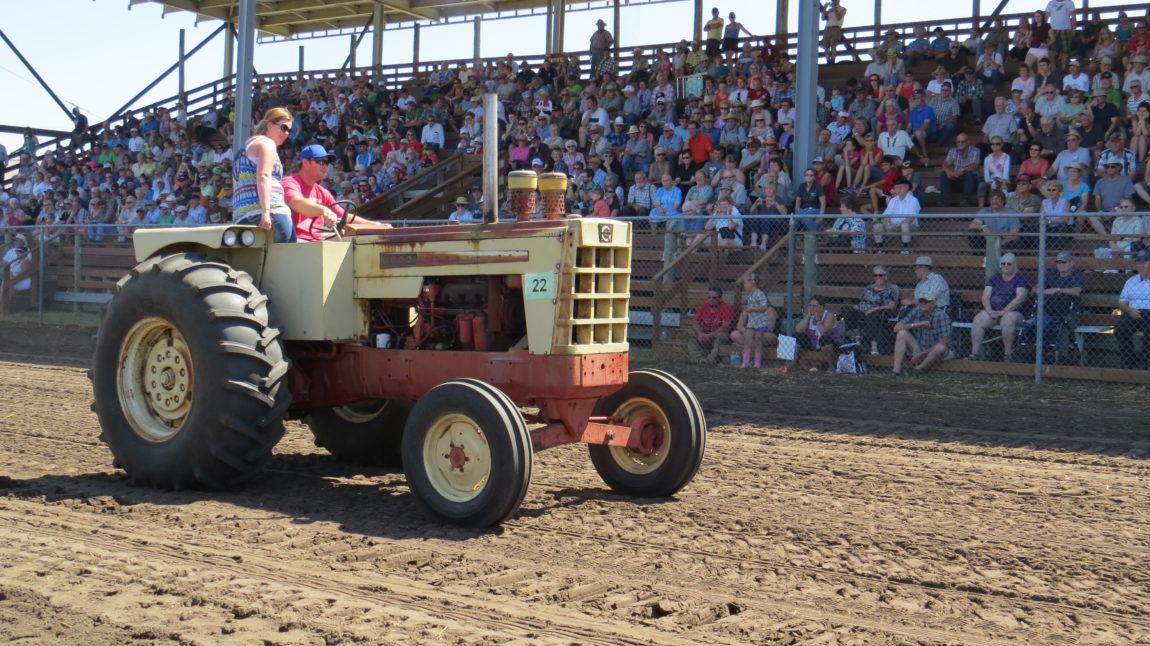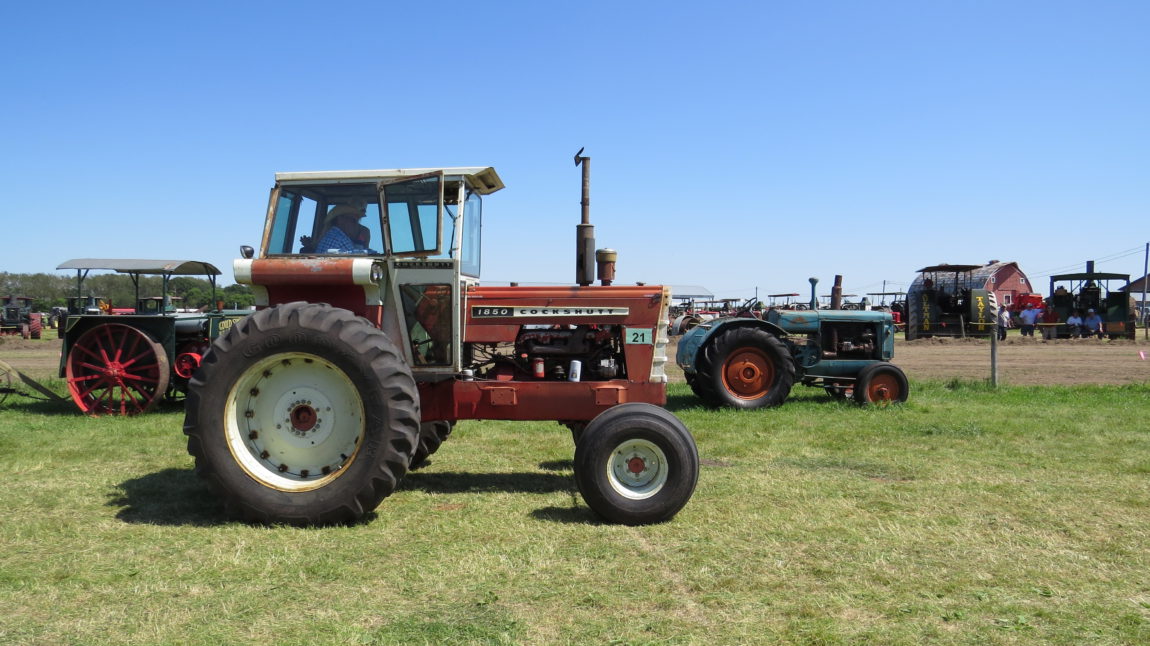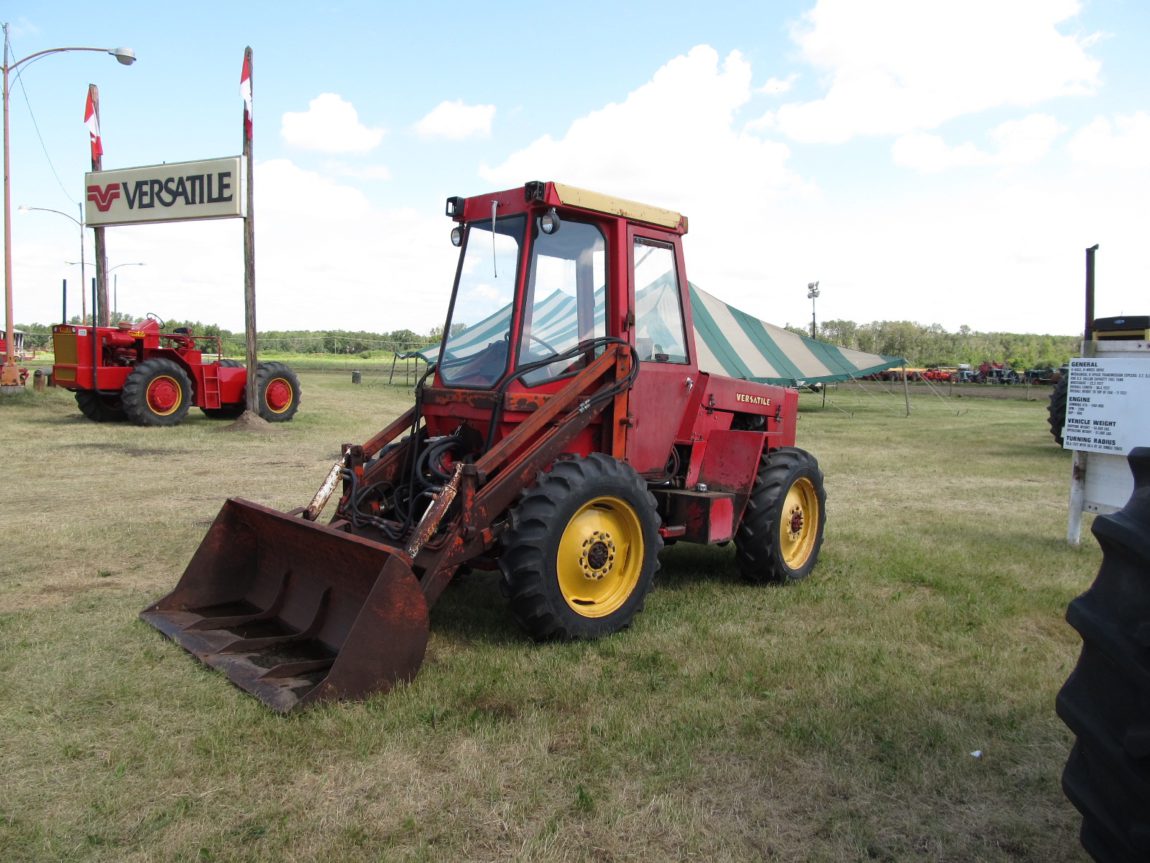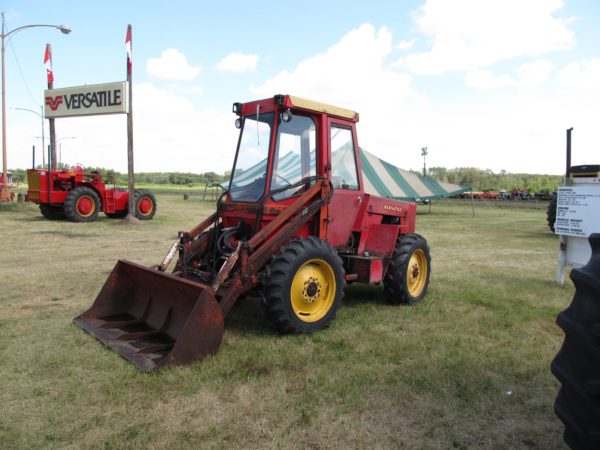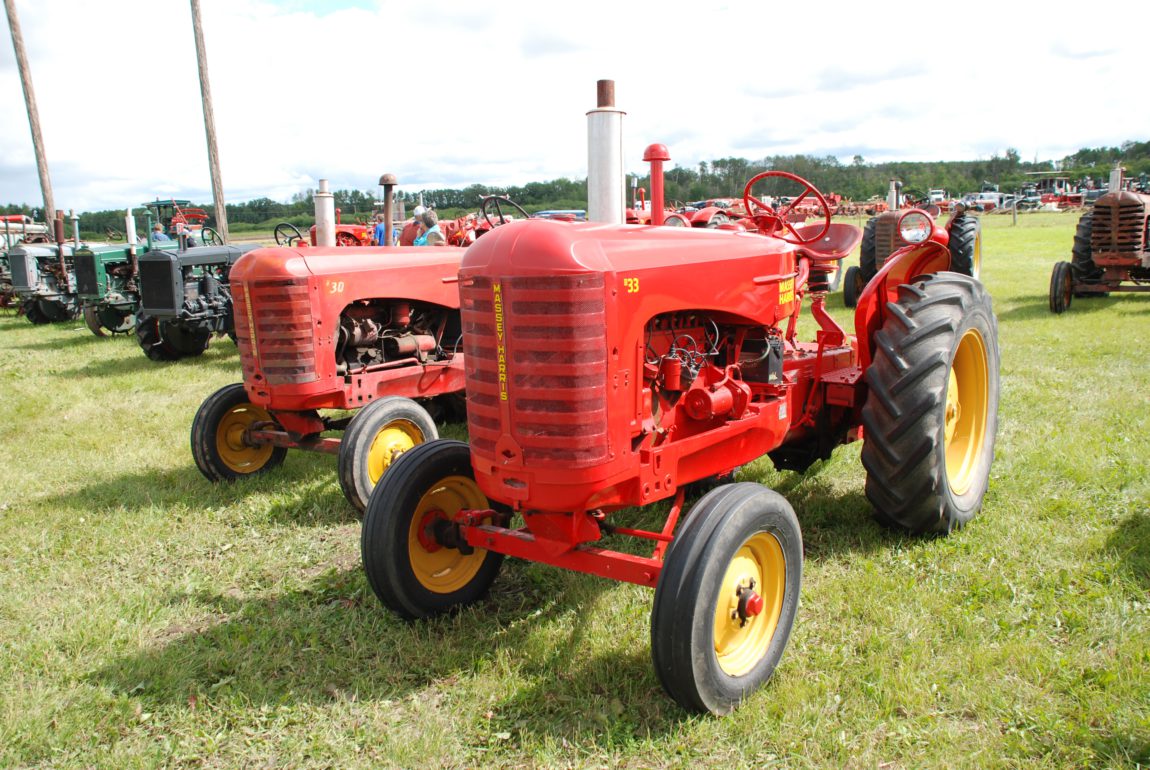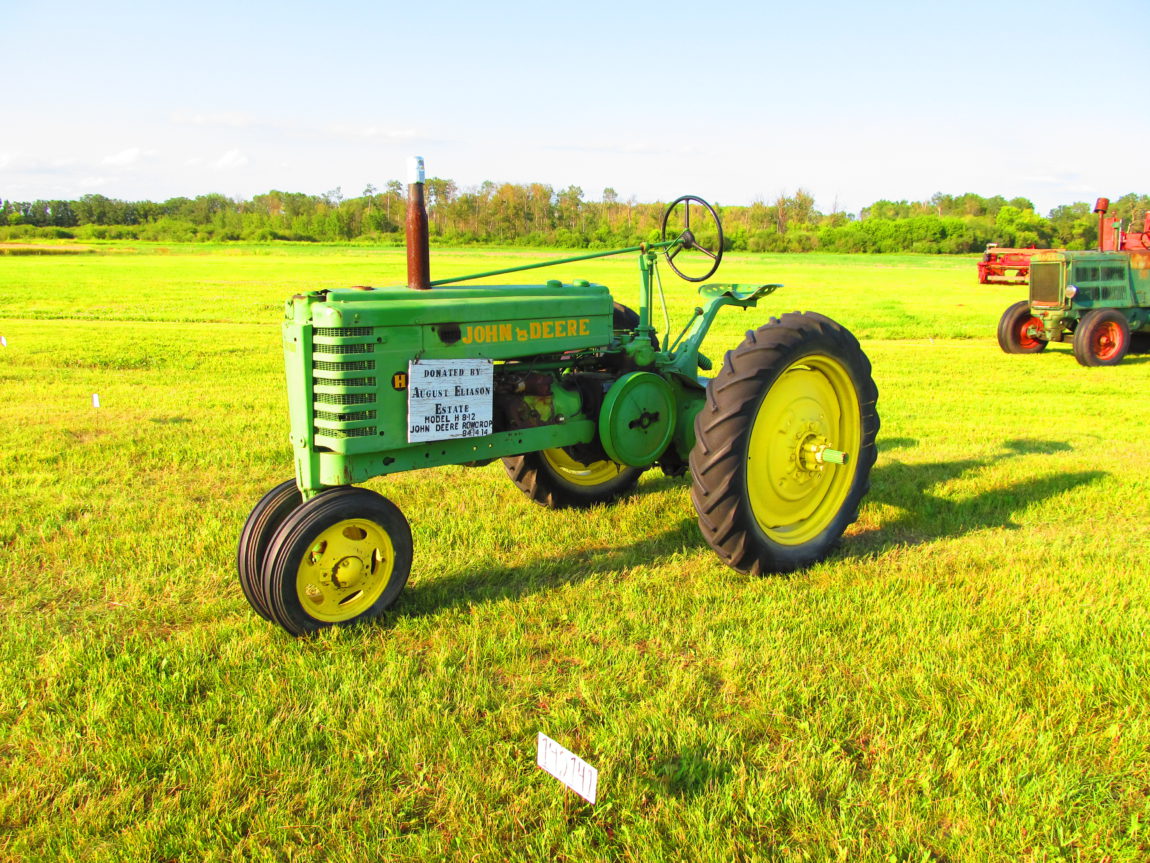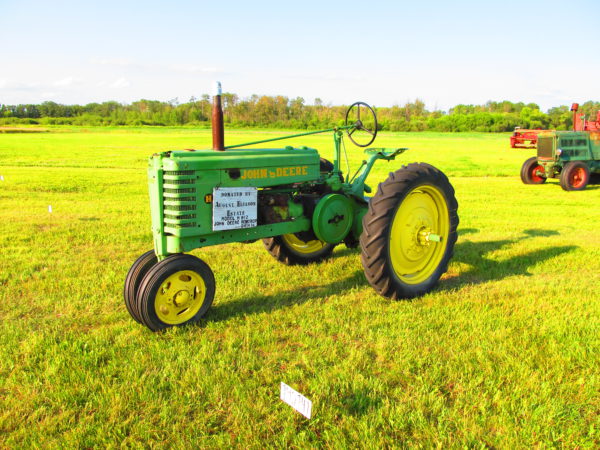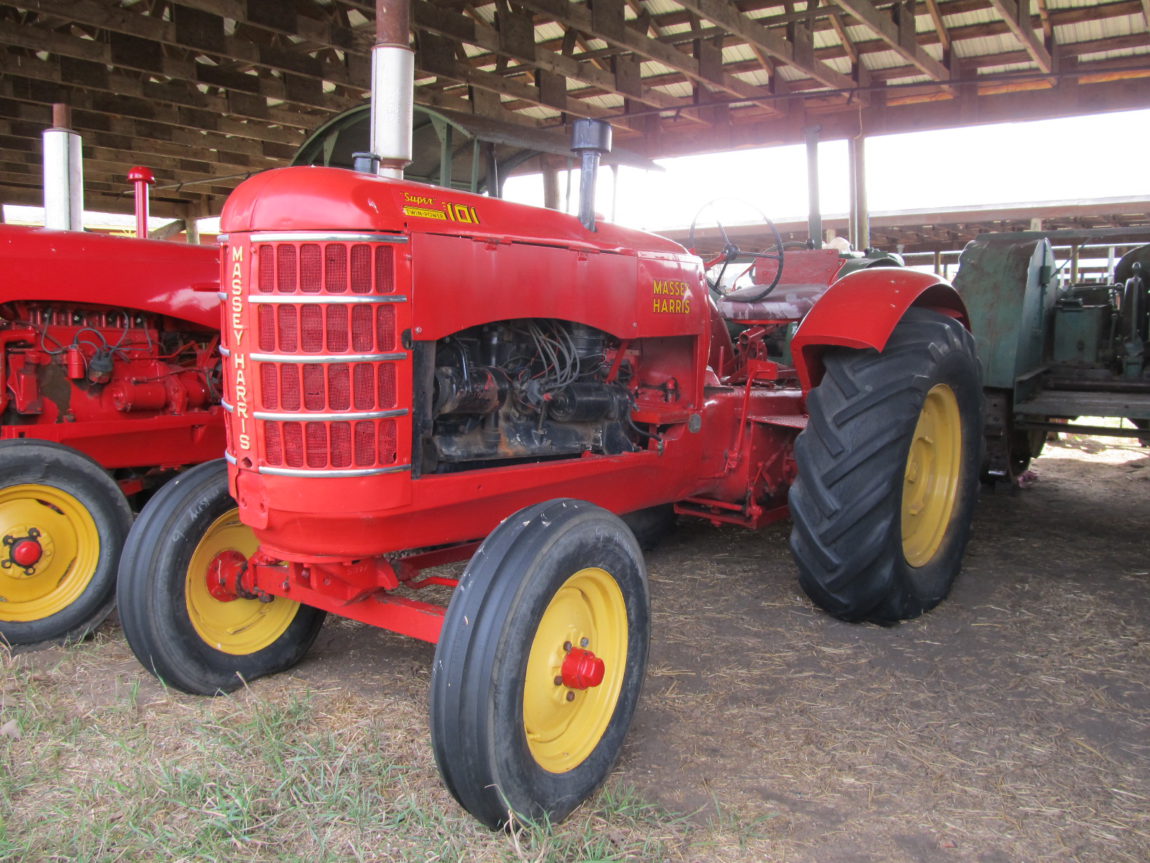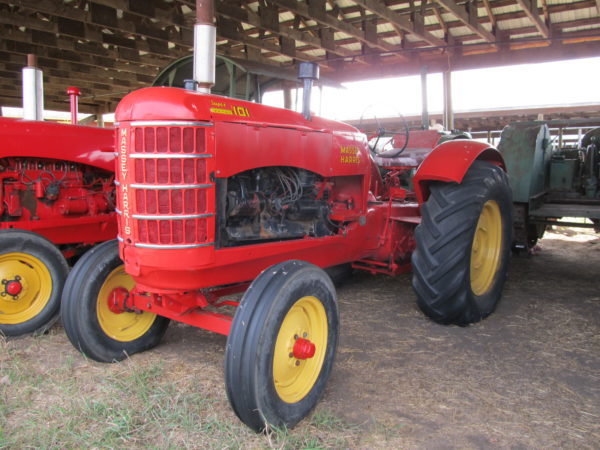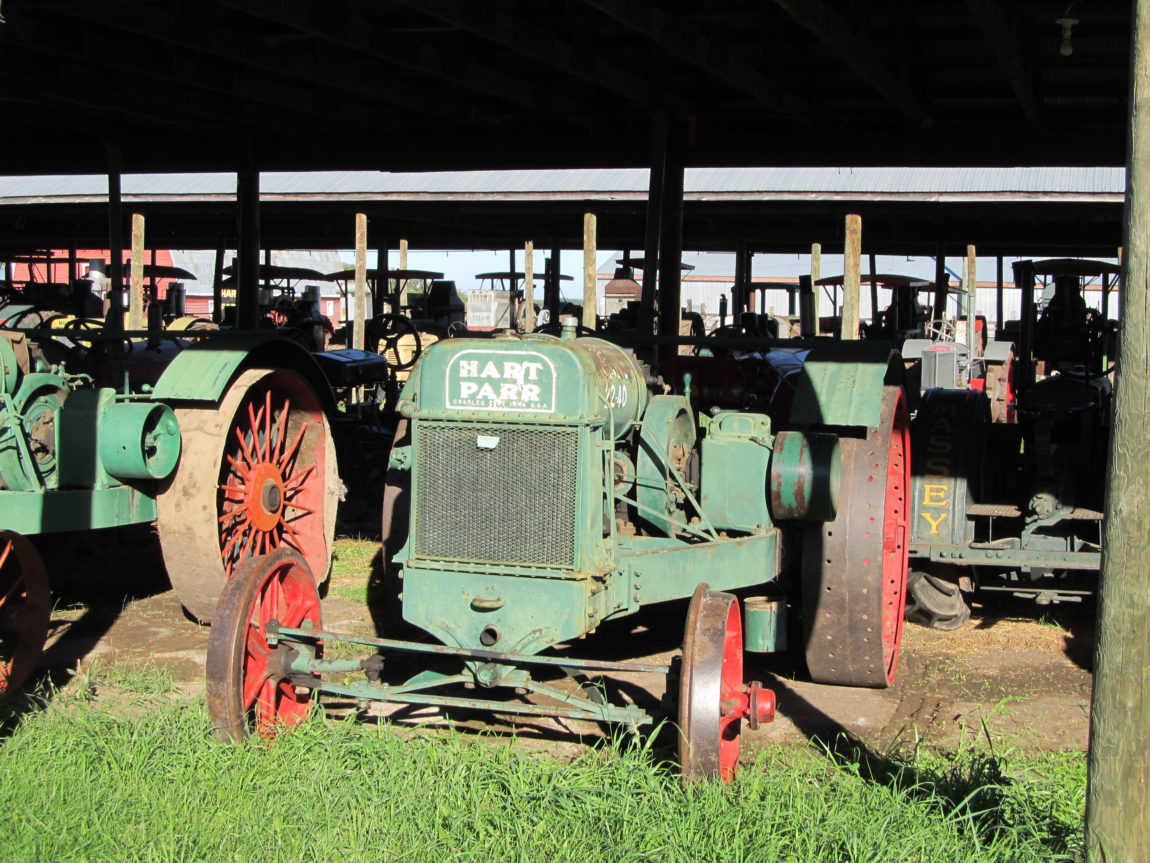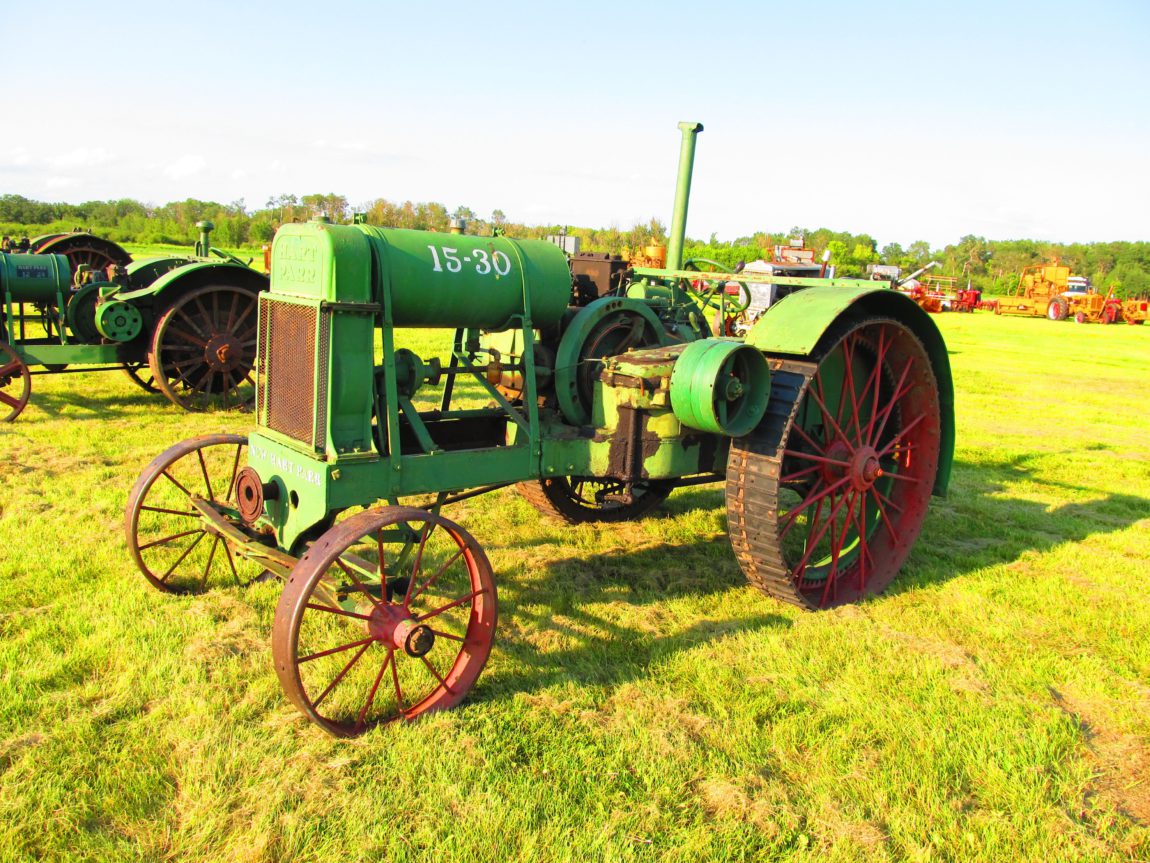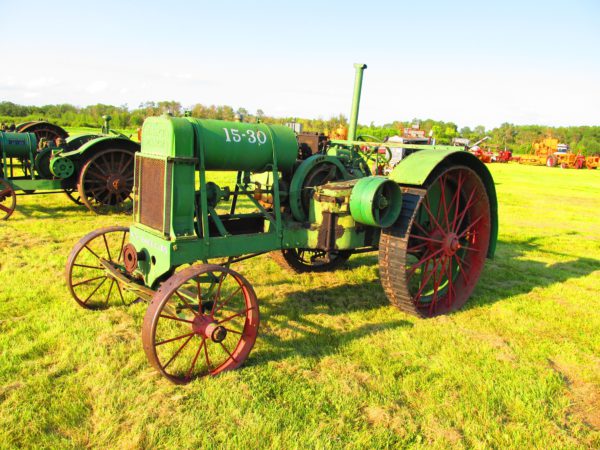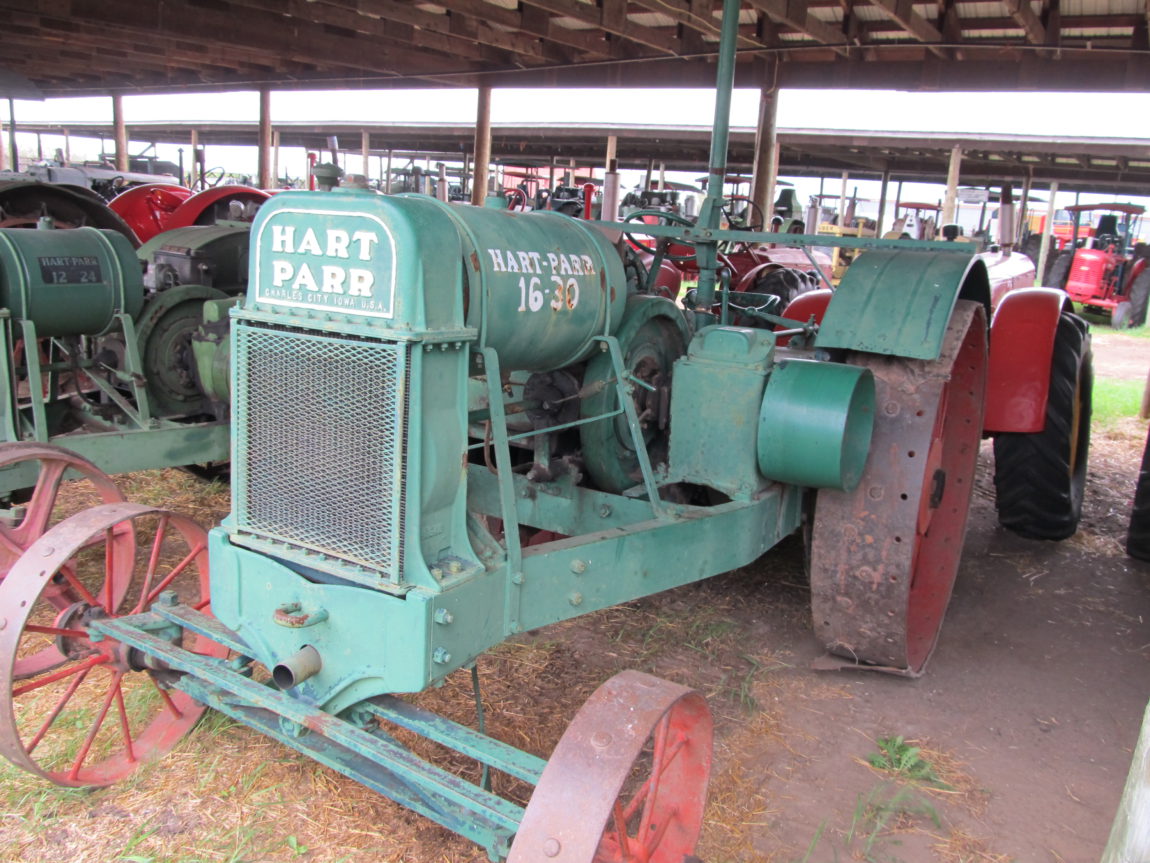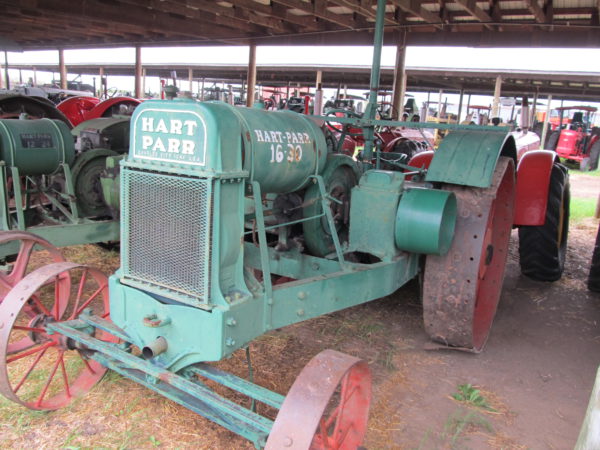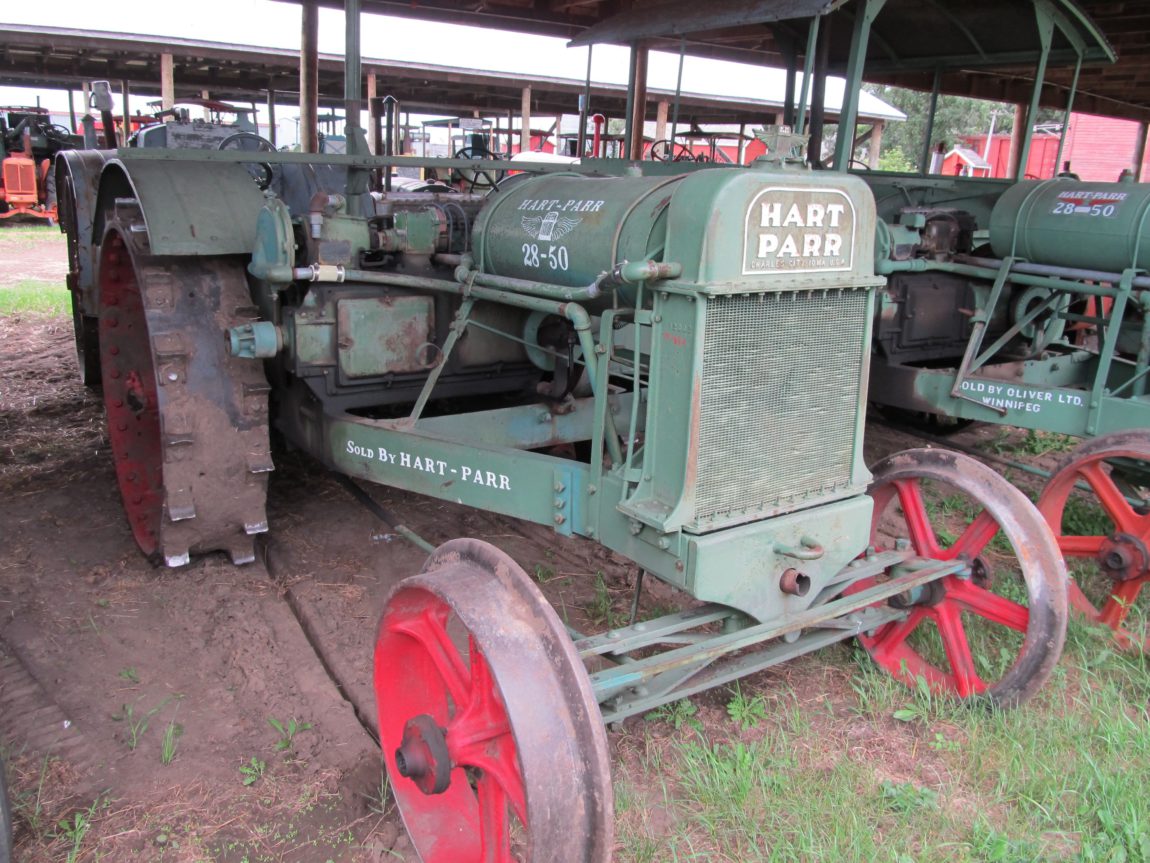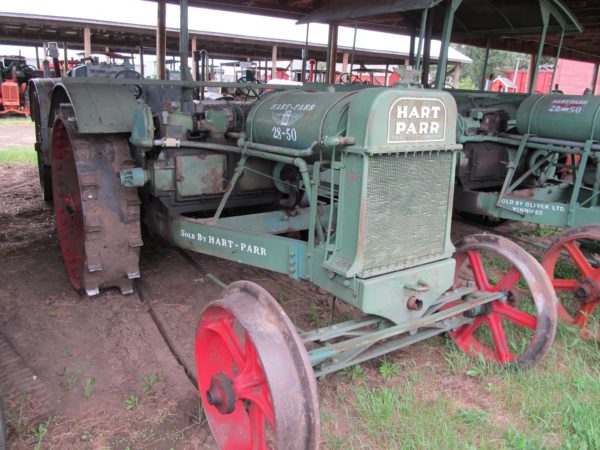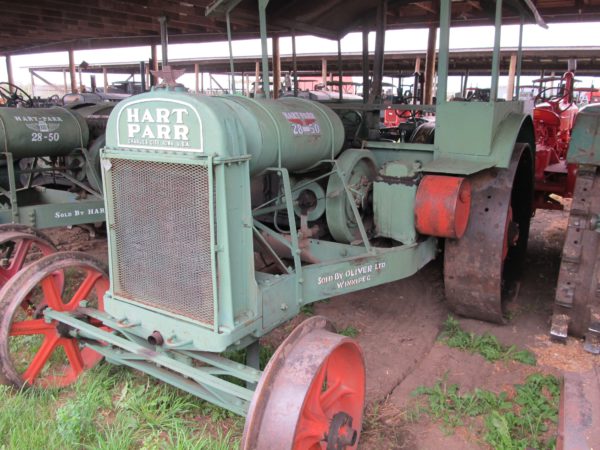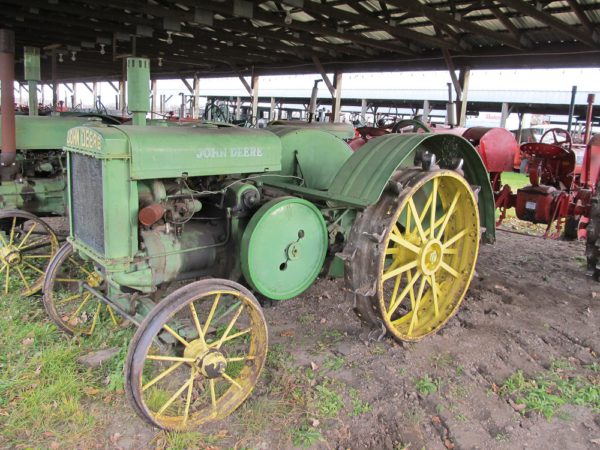
SN 73293 was built in early 1929. While the Model D’s built between 1926 and 1930 look very similar to the the so called “spoker” Ds, they do differ in several ways. Most noticeable is the spoked flywheel which was replaced by a disc type flywheel as the spoked version was prone to cracking the spokes. Also the transmission top was changed to a plain steel stamping in place of the cast iron tops with the words “Waterloo Gasoline Engine Co. Waterloo Iowa, U.S.A” cast in to the top. The large bowl brass Schebler Model D carburetor was replaced with a smaller carburetor in 1927. Actually there were two variations of the Model D used, the Schebler 298 D4 in 1923 and 1924 and the Schebler 304 D4 in 1925, 1926 and into 1927. After the Schebler D, John Deere used a succession of carburetor models. SN 73293 was equipped from the factory with a Schebler AD411 R
There are some changes not immediately noticeable. The 1926 production of Model Ds retained the keyed crankshaft when the pan flywheel was introduced however in 1927 the splined crankshaft and flywheel was introduced. At the same time the engine cylinder bore was increased to 6.75 inches from 6.5 inches.
Front wheels can change with some production coming with front wheels featuring spokes made out of flat iron rather than iron rod. At some point between 1925 and 1929 the rear wheels changed to a design featuring 20 flat iron spokes rather than 12 flat iron spokes. It does appear that alternative designs were available as some Model Ds sport skeleton rear wheels or tip toe rear wheels. Some producers found their soil conditions warranted different wheels than the standard designs.
John Deere claimed that the two cylinder engine design made possible a short, properly heated manifold with both cylinders equidistant from the carburetor. The gasified fuel traveled only a few inches, each cylinder received the same charge, with combustion taking place immediately after the cylinder was charged. This meant there was no chance for the fuel to re-liquefy. The Model “D” could burn low-cost fuels such as distillate, furnace oil, fuel oil, stove tops, Turner Valley naphtha, some grades of Diesel oil, and other money-saving fuels successfully, as well as gasoline or kerosene. When burning these fuels the tractor would be started on gasoline, allowed to warm up and then switched over to the low cost fuel. The gas tank featured two compartments, a small one for gas and a large compartment for kerosene or low cost fuel. A three way valve could switch between tanks as well as featuring an off position. Usually to shut the tractor down the operator just turned the selection valve to the off position and let the tractor run out of fuel, draining the carburetor in preparation for starting on gas.
John Deere further claimed, to help in the combustion of low -cost fuels, the relatively slow-speed, two-cylinder engine allowed more time for the complete combustion of these heavier, slower-burning fuels. The combination of short, hot manifold with the gasified fuel traveling the same distance to each cylinder, and slower engine speed also reduced harmful oil dilution in a John Deere Model “D” Tractor when burning low cost fuels, resulting in far longer life of all engine parts.
Apparently some Ds in Southern Alberta and in Montana even burnt light sweet crude oil for fuel. When burning this fuel, often a different manifold was used with the exhaust coming out on the opposite side of the tractor. This manifold design was hotter and better vaporized the crude oil than the standard manifold. However it was a common practice when burning crude oil to actually drain excess oil out of the crankcase at the end of the day. Not all the crude oil was burnt in the cylinder and the unburnt ”ends” were wiped off the cylinder walls and swept into the crankcase by the pistons.








